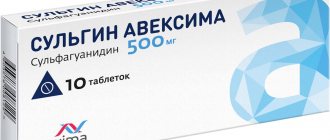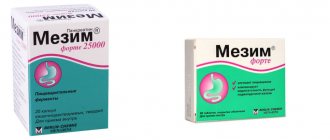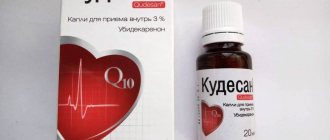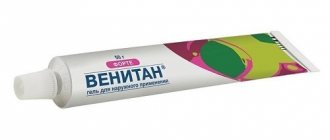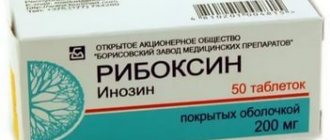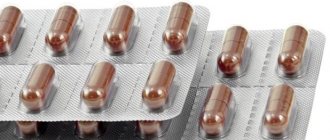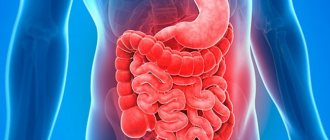Glycine Forte is prescribed to improve the psycho-emotional state against the background of the effects of chronic stress. Other indications are possible. This is a nootropic drug that normalizes brain activity. The main component is identical in its chemical structure to the natural substance formed in the tissues of the central nervous system. It is used in neurological, psychiatric and general therapeutic practice. Can be used in children from the age of fourteen.
Studies have been conducted to prove the presence of medicinal properties in the active component of the drug. However, many experts question the effectiveness of oral administration of this chemical compound.
Composition and release form
Glycine is an active component with medicinal properties. This chemical compound is also called aminoethanoic acid. One tablet contains two hundred and fifty milligrams of the active ingredient. The composition of additional substances includes fiber, polyvinylpyrrolidone and magnesium salt of stearic acid.
Package
It is produced in tablet form.
Action of Glycine Forte
According to the classification, the medicinal substance belongs to metabolic and nootropic medicines. This chemical compound plays an important role in brain activity. In the human body, aminoethanoic acid forms many biologically significant substances, including proteins. Also used by the central nervous system as a mediator. Receptor structures that perceive this substance are contained in many parts of the brain and spinal cord. Aminoethanoic acid has an inhibitory effect, increasing the release of gamma-aminobutyric acid from nerve cells.
The nervous system controls the level of aminoethanoic acid in the brain, since this chemical compound is used to maintain the functional activity of cells. In the brain area, its own molecules of this substance are formed. It is believed that an external source of glycine affects the condition of nerve tissue, but this medicinal effect has not been proven.
Basic properties
- Normalization of mental and emotional activity. The inhibitory effect of the active component on nervous tissue eliminates irritation, mental stress and other unpleasant manifestations that occur when exposed to chronic stress.
- Effect on night rest. Using the substance helps prolong sleep duration and speed up falling asleep. The frequency of night awakenings decreases.
- Normalization of mood. When using the medicine, your mood improves. The apathetic state is eliminated.
- Restoration of nervous tissue activity after various pathologies, including tissue necrosis (stroke) and other organic lesions of the central nervous system.
- Improving cognitive functions of higher nervous activity, including memory and intelligence.
- Relief of symptoms of autonomic disorders in menopausal syndrome and other conditions.
Has a complex effect.
Analogs
Glycine Forte is a drug with a high glycine content, which must be taken into account when selecting a substitute.
The drug has the following analogues in terms of application:
- Glycine. It contains the same active ingredient, but the drug differs in its lower content. The average cost is 29 rubles.
- Instenon. Used in the treatment of diseases related to the brain. It also helps to cope with some problems caused by age-related changes. Its special feature is that it requires a prescription to purchase. The average price is 240 rubles.
- Eltacin. Has a smaller spectrum of action than Glycine Forte. The drug contains synthetic analogues of glycine. The average cost is 180 rubles.
- Afobazol. Reduces feelings of anxiety, normalizing a person’s condition. Prohibited during pregnancy and lactation. The average price is 340 rubles.
- Glutamic acid. Prescribed for brain damage, it differs from Glycine Forte in its affordable price. This is one of the cheapest analogues of Glycine Forte, which costs from 25 rubles.
- Glycised. Normalizes sleep, removes anxiety. The active component of Glycised is similar to the drug Glycine Forte. Differs in a smaller amount of active substance. The average cost is 50 rubles.
- Antifront. This drug is prescribed for patients who exhibit a negative reaction to changes in weather. Antifront has a calming and gentle effect. Used for deterioration of health and drowsiness. A special feature of this medicine is that it is available for purchase exclusively in online pharmacies. The average cost of the drug is 1,700 rubles.
Analogues of Glycine forte are: Cerebrolysate, Amylonosar, Picamilon, Demanol, Glycine, Cortexin, Nooclerin, Divaza, Cellex, Noopept, PikogaM, NooKam, Neuroferon, Cebrilysin, Cogitum, Neurobutal, Combitropil, Minisem.
Absorption and excretion
The chemical compound is well absorbed in the digestive tract and absorbed into the bloodstream. According to the manufacturer, it overcomes various biological barriers, including the blood-brain barrier. Medicinal properties are due to the substance entering the nerve tissue of the brain. It does not accumulate in anatomical structures and is easily excreted from the body after transformation in the liver tissue. Against the background of exchange, it is destroyed to water and carbon dioxide. There is no change in metabolism in patients with impaired liver or kidney tissue. There is no binding to blood proteins.
How is it prescribed to children?
Instructions for use of Glycine for children
Healthy children and adolescents with deterioration of memory and performance, serious emotional stress are prescribed 1 tablet 2-3 times a day. Treatment can continue for 2-4 weeks. The specialist will tell you in detail when prescribing how to give Glycine to children or how to give infants Glycine for other diagnoses.
It should be noted that the buccal application of Glycine involves its placement in the oral cavity or between the gum and upper lip until completely dissolved. This use of the drug ensures that the active substance enters the body through the mucous membranes. Sublingual administration is also possible.
Glycine forte Evalar: instructions for children with social deviation and decreased performance – 100 mg up to 3 times a day. Therapy time is 2-4 weeks.
For a child under 3 years of age, the dose is reduced by half, that is, instead of 100 mg, they are given 50 mg. If glycine is indicated for a baby, the mother takes the drug. The amino acid will penetrate into breast milk, with which it will enter the child’s body.
Indications for use of Glycine Forte
Used as a dietary supplement. Does not apply to medications used in the treatment of pathological conditions. It can be used to relieve symptoms of chronic stress and other conditions that negatively affect the functioning of the nervous system and internal organs. Used as monotherapy or with other drugs.
Normalizes the functions of nervous tissue
It is recommended to consult a specialist before taking it.
Main indications
- Complications of long-term chronic stress, manifested by decreased mood, psychological tension, irritability, weakness, fatigue, decreased performance and other symptoms.
- Use together with other medications to normalize the activity of nervous tissue after its organic damage, including complications of stroke.
- Hyperactivity, decreased concentration and other mild mental disorders in childhood.
- Dependence on ethanol in adults at any time, including binge drinking and the appearance of signs of central nervous system damage due to the toxic effect of the substance on neurons.
- Impaired cognitive functions, including memory impairment and decreased intelligence.
- Deterioration of sleep, manifested by prolonged falling asleep and insufficient duration of night rest.
Usually used together with other medications.
Instructions for use of Glycine for children in tablets
To begin with, it is important to note that Glycine for children should only be prescribed by a doctor - a pediatrician or neurologist. Self-administration of this drug may cause serious mental problems. Based on the general condition of the child, medical history, course of maternal pregnancy, nature of labor, the specialist will prescribe the correct dosage and individual treatment period.
In most cases, the dosage of the drug for children is as follows:
- children under 3 years old - 50 mg of glycine;
- Children over 3 years old are recommended to take 100 mg of glycine.
The frequency and duration of glycine intake during the day depends on the indications for taking the drug.
- For stress, mental tension, memory impairment, inability to concentrate, delayed mental development, decreased mental activity, children over 3 years old are recommended to take 2-3 times a day, course use for 14-30 days.
- For various pathologies of the nervous system, which can occur with hyperactivity, excessive agitation and sleep problems, children under 3 years of age are recommended to give glycine 50 mg 2-3 times a day, duration of administration is 7-10 days. Then the dosage is reduced to 50 mg of glycine 1 time/day, course use for 7-10 days. Children from 3 years old - 100 mg of glycine 2-3 times a day, for 7-14 days. For appropriate indications, Glycine intake can be extended up to 1 month.
- For insomnia and other sleep problems,
the drug is taken 20 minutes before going to bed in doses depending on the age of the child.
Predicting the time of appearance of the desired effect is quite problematic, since the effect of the drug also depends on the individual specifics of the child’s body.
Instructions for use
It is available over-the-counter, but it is recommended to consult a specialist before use. The doctor will clarify the complaints, conduct an examination and draw up a regimen for use. In some cases, the use of medication is not enough to normalize the activity of the nervous system. Several medications must be used. It is important to consider that glycine is a supplement. This chemical compound does not eliminate the root cause of unpleasant symptoms and is not used as monotherapy.
The tablet form dissolves under the tongue or behind the cheek. The dosage is calculated taking into account the patient's condition. For adult patients, it is recommended to use from one hundred seventy-five to two hundred and fifty milligrams of the active component once. In childhood, it is recommended to use from fifty to one hundred milligrams of the active component once. You can use the product two or three times a day. The duration of therapy is determined by a specialist.
additional information
- As prescribed by a specialist, it can be used together with medications to treat mental and neurological disorders, including antidepressants, antipsychotics and anticonvulsants. Glycine reduces the toxic effects of these drugs on tissues and organs.
- Use together with antipsychotics, antidepressants, anxiolytics, hypnotics and sedatives increases the effect of inhibition of the central nervous system.
- If the patient experiences a decrease in blood pressure, the doctor may change the dosage. If a decrease in blood pressure is observed during drug therapy, treatment is discontinued.
- If non-therapeutic doses are used, the following undesirable reactions may develop: sedative effect during the day, dizziness, fatigue, weakness, vomiting. It is important to follow the indicated dosages and recommendations of your doctor.
Full instructions can be found in the packaging.
Application and dosage of the drug Glycine 300
The tablet must be dissolved under the tongue without drinking water. Can be taken on an empty stomach or after meals.
For physical and mental exhaustion, asthenia, deterioration of memory and attention, adults are prescribed 1-2 tablets per day. The course of treatment is at least 1 month. A repeated course can be carried out at intervals of 10 days.
For insomnia, you should drink 0.5 tablets 30 minutes before going to bed.
Patients who have suffered an ischemic stroke should take the drug no later than 6 hours after its onset. As prescribed by the doctor, the dose can be increased to 3 tablets per day for 1-5 days.
For insomnia, you should drink 0.5 tablets 30 minutes before going to bed.
Analogues of the drug
There are other medications based on this chemical compound. Close analogues include Glycine-Ka and Glycine-ECO. It is important to pay attention to the composition. Some analogues contain additional components, such as B vitamins. There are also indirect analogues that have similar medicinal properties.
Indirect analogues:
- Afobazole is an anti-anxiety drug.
- Tenoten is a sedative.
Close analogue
Instructions for use differ. Before using an analogue, you should consult a specialist.
special instructions
Before using this remedy, the patient should consult a specialist. With prolonged use of Glycine Forte Evalar, the patient does not develop dependence on the drug, since it contains components that are natural to the body.
People with a tendency to arterial hypotension should take smaller doses of Glycine Forte and at the same time control blood pressure levels. If your blood pressure drops to a lower level than normal, you should stop taking the tablets.
Reviews and prices
Neurologists, psychotherapists and other doctors speak well of the safety profile of the drug. Adverse reactions during administration occur very rarely. Patients take this biological supplement to normalize sleep and improve the functioning of the nervous system. Many experts insist that oral administration of aminoethanoic acid is ineffective.
The average price of thirty tablets of two hundred and fifty milligrams is 65 rubles.

